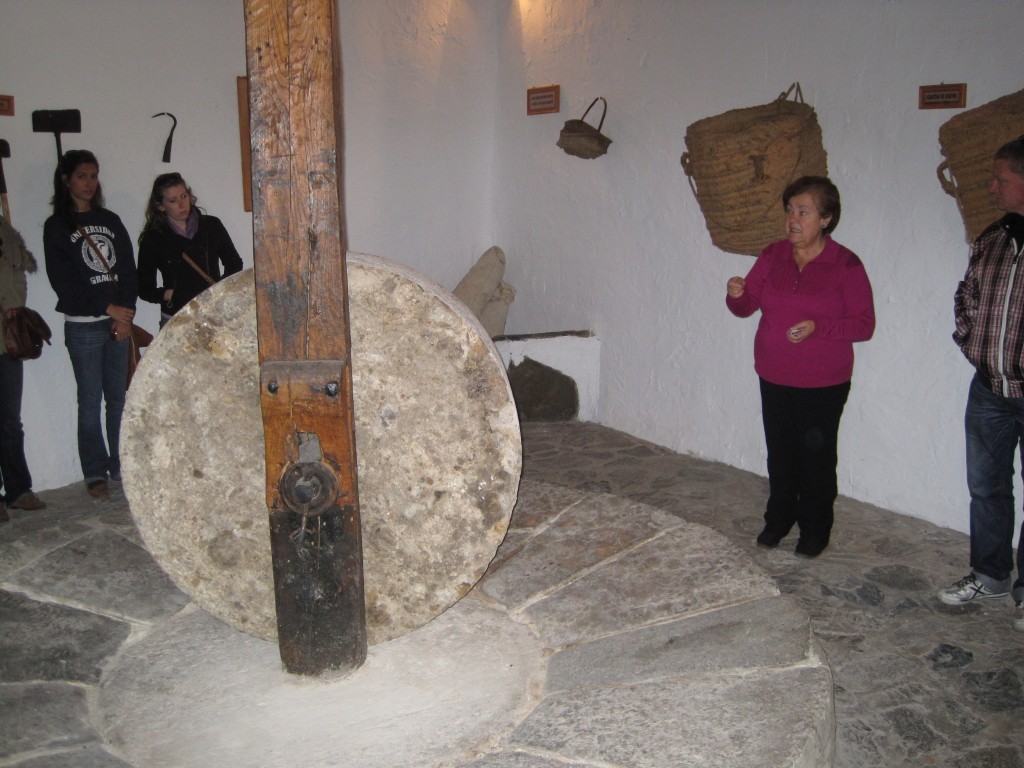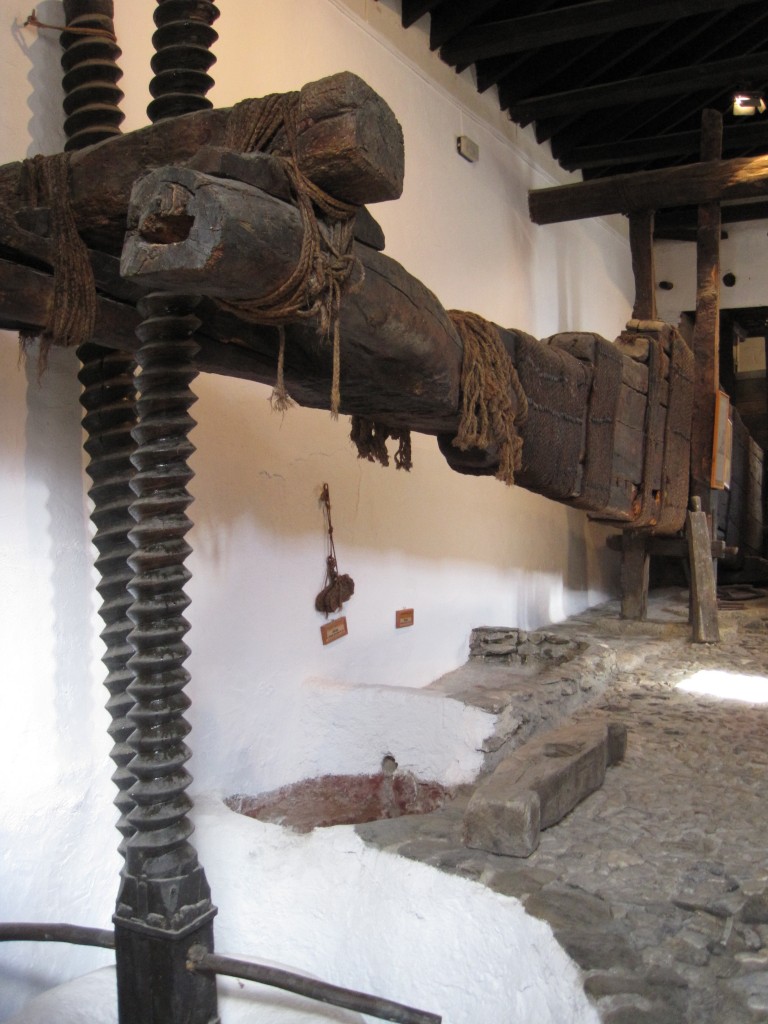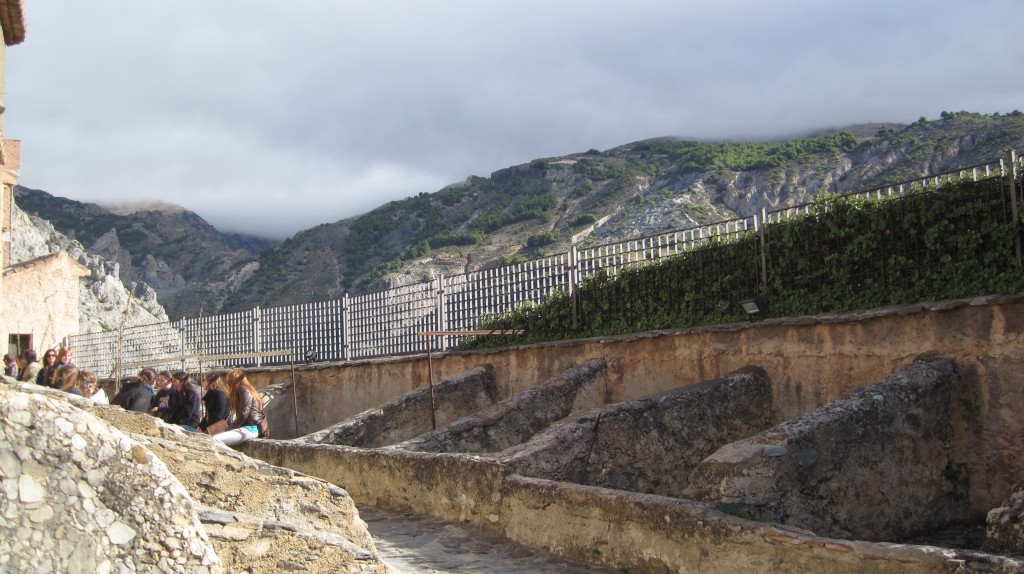Olive oil, along with wine and bread, are staples of the Spanish (and Mediterranean) diet. I enjoy extra virgin olive oil direct from my host family’s village daily on salads. It’s really strong stuff, would ruin soups or other cooked foods, but it’s great for salad, and so healthy! I also enjoy the not so healthy things, like the fries and eggs that my host mother cooks in a saucepan full of oil. Yes.
My program went to a nearby village to visit an old fábrica de aceite de oliva, olive oil factory. It was pretty crazy to see with my own eyes just how old the tradition is. We saw two presses, one from Roman times, another from Arab times.

A Roman olive grinder. Everything you see here is the real deal, original equipment from before Christ!
The above equipment is called a Molina de Sangre, which literally translates as blood mill, but means a mill powered by animals. During a harvest this mill would run 24/7 using a rotation of animals. The above process produces a paste or dough which is then taken to a separate place to have the oil pressed out of it.
Arab technologies were much more advanced that those of the Romans. They harnessed the power of the mountain rivers using pipes and a waterwheel to grind the olives. After they would place the paste into rope baskets and put them below the press in the top right corner of this photo. Two men would then turn the bars below and oil would fall through the rope basket into large clay cisterns. What falls from the olives really ought to be called juice, because at first is is full of water, not just oil. Arabs used a series of cisterns to let the oil naturally separate from the water, then they would use large ladles to remove the oil. Then you’re done, no processing necessary.

